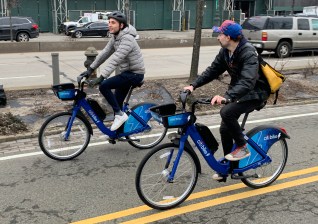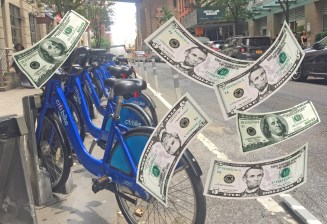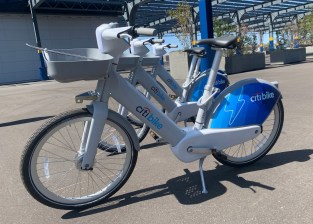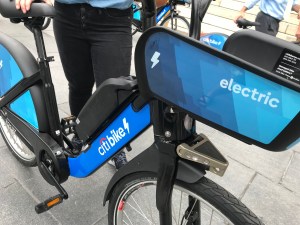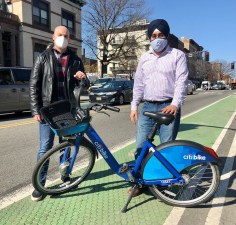E-Citi Bikes Will Return this Winter — With Per-Minute Fees, Not a Flat Rate
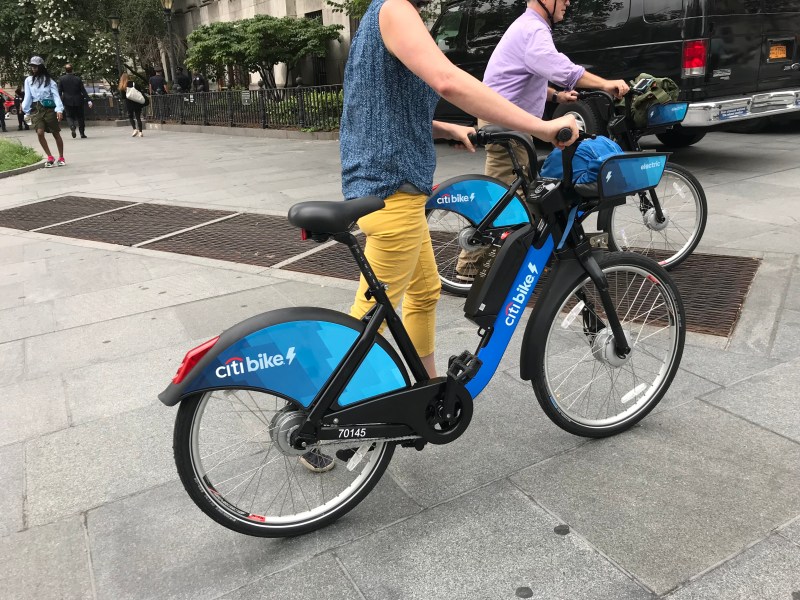
It will be the winter of Citi Bike members’ content.
Several hundred pedal assist e-bikes, which vanished from the streets in April amid safety concerns, will return at some point this winter, the first phase of an expansion that will eventually comprise 4,000 of the popular and game-changing electric bicycles, Citi Bike said Friday, updating a previous promise that the bikes would return this fall.
The return of the e-bikes will come with a new pricing plan that eliminates an earlier notion of charging members and non-members a flat add-on fee of $2 per e-ride. Now the company says it will price the turbo-charged rides at 10 cents per minute for members, 15 cents for non-members and 5 cents for Reduced Fare Bike Share members. The per-minute fees are capped at $2 — the cost of a 20-minute ride — if the ride begins or ends outside of Manhattan.
“We heard your feedback. Members told us they did not want to pay a flat charge every time they chose an e-bike,” the company said in a statement. “These changes will eliminate a point of frustration and save riders money by only charging them for the time they use.”
Pricing will be a key element of the success of the electric Citi Bikes, which enable far longer rides from far-flung neighborhoods, holding out the promise of reducing tens of thousands of car trips, a stated goal of Mayor de Blasio, who nonetheless does not put city money into this crucial part of the public transit network.
Citi Bike officials said that the outer-borough fee cap is meant to encourage people to take an e-Citi Bike across a major bridge, a challenge on a “classic” Citi Bike.
“E-bikes are great for crossing steep bridges, and we want to help riders farther from Manhattan commute across the East River conveniently and affordably,” the company said.
At the same time, Citi Bike will no longer lock out users for two minutes after they check in a bike, so e-bike riders will be able to swap out the metered bike for one without a minute-by-minute fee if they no longer think they need the boost.
The pricing fee is similar to the way e-scooters and dockless bike share works in other cities — with per-minute fees after an initial unlock charge, typically $1 or $2. But Citi Bike said its members, who pay $169 per year for unlimited, 45-minute rides, did not want a high unlock fee for e-bike rides, most likely because the vast majority of e-bike rides were less than 20 minutes during their initial deployment (though at that time, the e-bikes were free to members, so it’s likely that the new fee will discourage short trips).
Friday’s announcement will immediately affect Citi Bike users within the existing footprint of Manhattan below 130th Street, the thin western edge of Queens, and Brooklyn from Park Slope to Greenpoint, with a newly added zone pushing deep into Bushwick to the Queens border.
The remainder of Manhattan, a slice of the East Bronx and more of Queens will get Citi Bike by 2023, the company has previously announced. Hunts Point, Elmhurst, Bay Ridge and other neighborhoods that would benefit from a massive e-bike fleet will not be getting Citi Bike any time soon.
Jon Orcutt of Bike New York thinks the return of e-bikes, and the pricing structure, are wins.
“We think removing the flat charge will be well received by riders,” he said. “More important, making a big pedal-assist fleet available on city streets is likely to propel Citi Bike usage beyond even this year’s massive ridership.”
Friday’s “winter is coming” announcement by Citi Bike overwrites the earlier, and oft-repeated, promise that the bikes would return in the fall — a promise made to Streetsblog as recently as Nov. 12. The Lyft-owned company consistently declined to provide a more specific date even as fall approached its annual resignation to winter on Dec. 21.
On Friday, company officials who briefed Streetsblog would not be more specific about the return date beyond “this winter.” Winter runs from Dec. 21 through March 21.
This whole saga began in April, when the entire 1,000-bike electrified fleet was hastily pulled off the streets after reports that some riders had experienced “stronger than expected braking force on the front wheel.”
Citi Bike had been expected to deploy 4,000 of the speedsters by that June, but nowhere near that number made it to the streets before the repair crisis, which affected similar bikes in Lyft-own systems in San Francisco and Washington, D.C. Bikes in San Francisco also had battery problems that required the company to test multiple new designs and find an entirely new supplier.
Company officials said that process, including the fabrication of thousands and thousands of new batteries themselves, took longer than expected, though San Francisco’s e-bikes will return in mid-December — at least a week, but more likely months, before New York’s. For now, cyclists in D.C. are out of luck.
“We’re working hard to bring e-bikes back to the Capital Bikeshare fleet as soon as possible,” a company spokesperson said.
Despite the loss of e-bikes, Citi Bike has actually been experiencing a robust period, with daily ridership frequently exceeding 80,000 trips per day and total miles traveled every day on the rise, too. There are more than 150,000 annual members. September was the most popular month ever for Citi Bike, with nearly 2.5 million rides, the company said.
One dark cloud on the horizon: Citi Bike officials will have to deal with the ramifications of pending e-bike and e-scooter legislation that passed in Albany earlier this year that bans pedal assist e-bikes on the Hudson River Greenway, the most popular bike lane in the country. The bill remains unsigned by Gov. Cuomo, and its fate is unknown.

